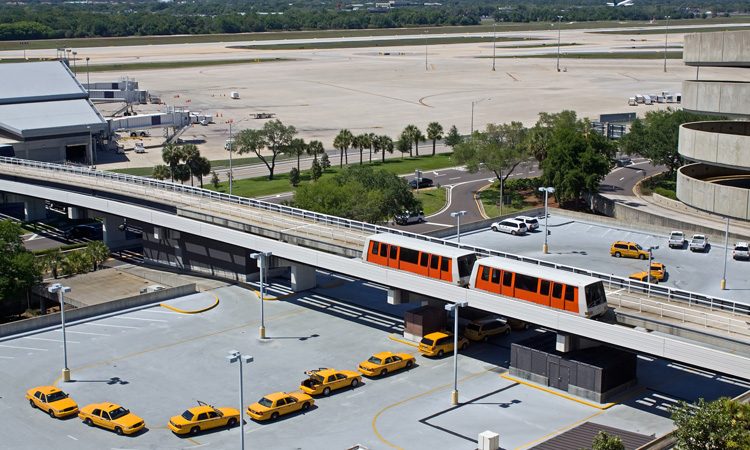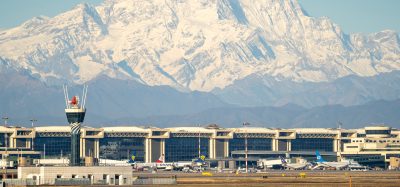Solving kerbside traffic congestion to increase passenger experience
- Like
- Digg
- Del
- Tumblr
- VKontakte
- Buffer
- Love This
- Odnoklassniki
- Meneame
- Blogger
- Amazon
- Yahoo Mail
- Gmail
- AOL
- Newsvine
- HackerNews
- Evernote
- MySpace
- Mail.ru
- Viadeo
- Line
- Comments
- Yummly
- SMS
- Viber
- Telegram
- Subscribe
- Skype
- Facebook Messenger
- Kakao
- LiveJournal
- Yammer
- Edgar
- Fintel
- Mix
- Instapaper
- Copy Link
Posted: 24 June 2019 | Al Illustrato, Thomas Rossbach | No comments yet
To manage increased levels of kerbside traffic, achieve a higher level of customer service and prepare for the potential future of autonomy, Tampa International Airport is deploying a unique express kerbside solution. Al Illustrato, Executive Vice President of Facilities at Tampa International Airport, and Thomas Rossbach, member of both AIA and ACI, explain more.


Like most major airports, Tampa International Airport (TPA) faces growing passenger traffic and congestion issues. With 58 gates, three runways and 23,000 parking spaces, the 3,300-acre facility boasts about 500 daily operations, making it one of the top 30 busiest airports in the U.S. in 2018, according to ACI.
In 2018, capacity hit an all-time high, with 21 million passengers passing through TPA, and 2019 is expected to see nearly 21.7 million passengers. Passenger numbers will see a steady increase of 2.8 per cent annually, to 28.7 million by the year 2031.
As passenger numbers grow, one of the most affected areas has been vehicle traffic, including kerbside drop-off areas, where an influx of transit network company (TNC) vehicles have added to congestion. Year-on-year, this traffic has seen an eight to 10 per cent increase.
To find a solution to airport congestion issues, officials at TPA in late 2011 began updating the airport’s master plan. The final three-phase plan allows the airport to accommodate up to 34 million passengers each year.
Like most major airports, Tampa International Airport (TPA) faces growing passenger traffic and congestion issues. With 58 gates, three runways and 23,000 parking spaces, the 3,300-acre facility boasts about 500 daily operations, making it one of the top 30 busiest airports in the U.S. in 2018, according to ACI.
In 2018, capacity hit an all-time high, with 21 million passengers passing through TPA, and 2019 is expected to see nearly 21.7 million passengers. Passenger numbers will see a steady increase of 2.8 per cent annually, to 28.7 million by the year 2031.
As passenger numbers grow, one of the most affected areas has been vehicle traffic, including kerbside drop-off areas, where an influx of transit network company (TNC) vehicles have added to congestion. Year-on-year, this traffic has seen an eight to 10 per cent increase.
To find a solution to airport congestion issues, officials at TPA in late 2011 began updating the airport’s master plan. The final three-phase plan allows the airport to accommodate up to 34 million passengers each year.
The first phase, completed in 2018, helped decongest kerbsides, roads and the main terminal, and included a 2.6 million-square-foot rental car centre, a 1.4-mile automated people mover and an expansion of the main terminal.
Phase 2 includes a kerbside expansion and 17-acre commercial development around the rental car centre. The commercial development area will feature an office building, convenience store with a petrol station, a hotel, a commercial kerb to accommodate transit and other ground transportation, and connections to regional transit networks. The expansion will include new express lanes for passengers without checked luggage.
Phase 3 includes the construction of a new Airside D with 16 gates capable of handling both domestic and international flights.
Express kerbside solution
Phase 2 is where TPA, in collaboration with HNTB, is developing a unique express kerbside design solution to manage the increased traffic. A survey indicated that more than 53 per cent of passengers at TPA do not check their bags. The airport’s existing kerbsides are reaching maximum capacity and more kerbside length and lanes are necessary to handle current and future peak-hour demand.
This plan creates an innovative express kerbside roadway that allows departing passengers with carry-on only baggage to choose an express kerbside; providing access directly to security screening and gates. This would be the first of its kind at any airport.
Reversing the arrival process, this innovation allows arriving passengers who did not check bags to by-pass the baggage claim lobby congestion and go directly to the express kerb for an expedited pick-up. This creative concept provides additional landside-kerb-and-road capacity for the airport while offering travellers an expedited process that will result in achieving a higher level of customer service to the airport’s passengers.
The plan would add 16 additional express lanes with direct connection to and from the terminal to decongest kerbs and meet levels of service requirements for the 20-year period and beyond. While other airports keep adding more islands and lanes in an attempt to address increasing kerbside congestion, data has shown this method slows down both vehicle traffic and cross passenger access.
“Safety is a top priority and risk of pedestrian injury is a concern,” said Jeff Siddle, TPA’s Vice President of Planning and Development. “Traffic modelling at airport kerbs proves that throughput of the kerb lanes and kerb congestion decreases significantly with the cross traffic of pedestrians.
“Tampa International chose to create higher throughput kerbside roads, no pedestrian conflicts and an enhanced level of passenger service.”
The HNTB-led express kerb concept was established in the airport master planning process, and by conducting a subsequent, detailed planning study of the terminal area.
During the master plan and the detailed terminal plan, vehicle counts were taken at peak hours and forecasted based on future passenger projections. Working with other airport consultants, TPA modelled the roadway and kerbside traffic with VISSIM traffic modelling software. Both exercises and additional re-calibration of the models took months to study.
Overcoming challenges
Working around a busy, fully operational airport can be a challenge. To minimise disruption to passengers and terminal activity, TPA is planning to build the express kerbsides outside current operations, while maintaining 100 per cent access throughout construction. A series of temporary barriers will be built to separate all construction from landside operations.
There will also be extensive wayfinding and signage starting a mile before the airport terminals to warn and direct drivers around any construction-related activity. The airport will launch a public outreach campaign prior to the start of construction to explain and advise passengers of the construction conditions at each phase of the work.
TPA employed innovative phasing plans to keep access open to the existing roadways, kerbs and the terminal all through construction. The airport will also be merging new roadways, and building elevated bridges over active roadways. This will involve night-time work and require shifting lanes of traffic to allow room to add the new roadway segments.
Innovation on display
Innovation is nothing new at TPA. The airport welcomed the world’s first people mover in 1971 and now it will usher in the aviation industry’s first express kerb.
“Tampa prides itself on being an airport innovator,” said Siddle. “We’ve done it in the past with the people mover, and looking forward, we will continue to seek new, innovative ways to improve airport efficiency and the overall passenger experience.”
The expanded kerbsides also position the airport well for autonomous and connected vehicles.
“We studied forecasts by various industry sources and HNTB’s autonomous vehicle experts to predict the saturation of autonomous vehicles in the future market,” explained Siddle. “These forecasts are hard to predict as our society and technologies are rapidly changing in this fi eld of innovation. But the ultimate implementation of autonomous vehicles is realistically projected to take longer than some overly optimistic predictions. Whatever the future holds, we’ll be ready.”
In order to add additional express lanes, phase 2 express kerbside projects will demolish two existing pedestrian bridges that link the long-term parking garage to the main terminal. The first pedestrian bridge will be demolished to allow the first half of the new blue side vertical circulation building (VCB) and roadway to be built.
TPA will then route passengers through a new VCB centre pedestrian bridge through a partially completed VCB building to allow the remaining existing pedestrian bridge to be demolished. This enables the last section of the VCB to be completed. This is necessary to maintain both pedestrian and vehicle flows and customer service throughout the construction process.
Phase 2 projects will start in July 2019, with final completion anticipated for July 2021.
Biography




Issue
Related topics
Capacity, Passenger experience and seamless travel, Terminal operations

















